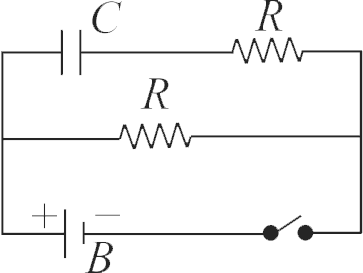357511 The plates of a capacitor are charged to a potential difference of 100 \(V\) and then connected across a resistor. The potential difference across the capacitor decays exponentially with respect to time. After one second the potential difference between the plates of the capacitor is \(80\,V.\) What is the fraction of the stored energy which has been dissipated?
357511 The plates of a capacitor are charged to a potential difference of 100 \(V\) and then connected across a resistor. The potential difference across the capacitor decays exponentially with respect to time. After one second the potential difference between the plates of the capacitor is \(80\,V.\) What is the fraction of the stored energy which has been dissipated?
357511 The plates of a capacitor are charged to a potential difference of 100 \(V\) and then connected across a resistor. The potential difference across the capacitor decays exponentially with respect to time. After one second the potential difference between the plates of the capacitor is \(80\,V.\) What is the fraction of the stored energy which has been dissipated?
357511 The plates of a capacitor are charged to a potential difference of 100 \(V\) and then connected across a resistor. The potential difference across the capacitor decays exponentially with respect to time. After one second the potential difference between the plates of the capacitor is \(80\,V.\) What is the fraction of the stored energy which has been dissipated?
357511 The plates of a capacitor are charged to a potential difference of 100 \(V\) and then connected across a resistor. The potential difference across the capacitor decays exponentially with respect to time. After one second the potential difference between the plates of the capacitor is \(80\,V.\) What is the fraction of the stored energy which has been dissipated?






